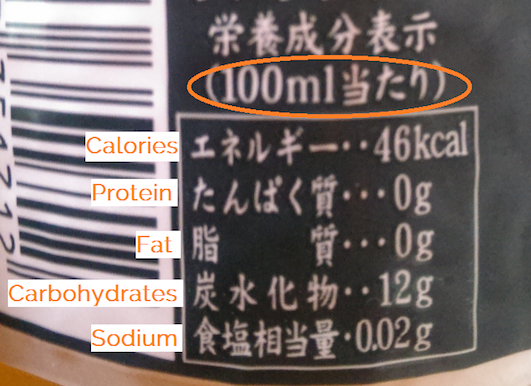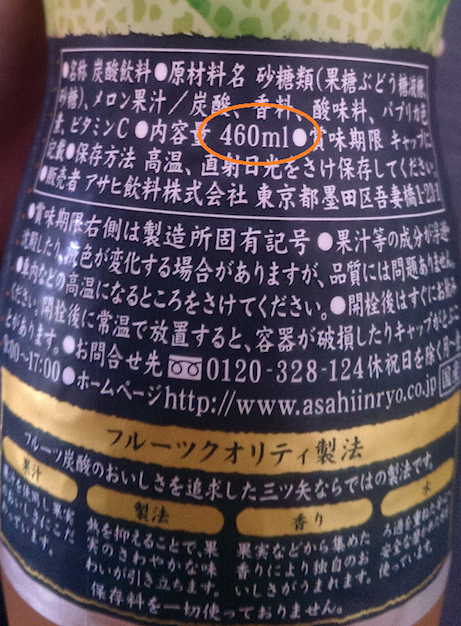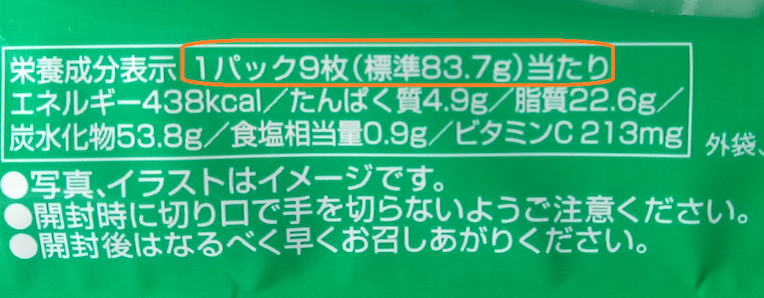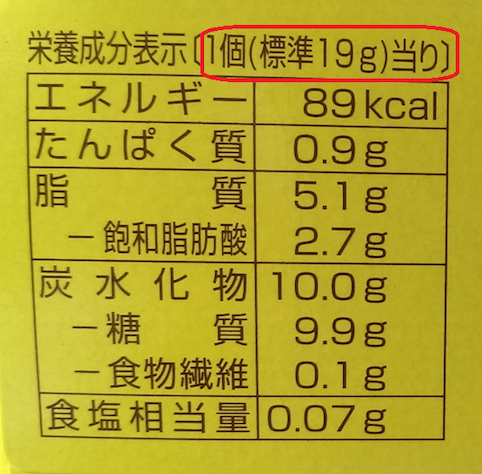2017
Making Sense of Japanese Nutrition Labels
Nutrition labels are confusing in any language. They all try to understate the ingredients, amounts of salt, sugar, and fat, and just generally do their best to make you think a food product is healthier than it actually is. This is made even more difficult in a foreign language. So let’s unwrap the mystery that is Japanese nutrition labels.
First, let’s take a look at a simple label.
- Serving Size and Net weight/volume
- Missing and Pooled Nutrients
Serving Size and Net weight/volume

Upon first glance it may look like this whole product is only 46 calories. However, if you note the 100ml 当たり above the nutrition information, this changes things. 100ml 当たり means “per 100 ml serving”. This does NOT mean that this entire product is 100 ml. To find out the total volume or weight of a food product, you need to look elsewhere on the packaging.

This can usually be found in the section that vaguely lists the ingredients. In the case of this drink, the full bottle contains 460 ml. So, this dramatically changes the calorie content. This whole bottle is far more than 46 calories. If you do the math, it comes to 211 calories for the whole bottle.
This is the trickiest part of every nutrition label in Japan, so don’t confuse the serving size with the total volume or weight of the product, as they are different more often than not.
But what if the label you’re looking at doesn’t have milliliters or grams, or the weight is hard to understand? Let’s look at an example.

This is the nutrition label for sandwich cookies. The first thing you will probably notice is the seemingly random 83.7 g serving size. Well, let’s break that whole thing down.
The important part here is actually the bit before the 83.7 g.
1パック9枚当たり (skipping the weight) means “serving size: 1 sleeve of 9 cookies”. So the 438 calories you see isn’t quite as high as it seems. Doing the math, these cookies come to 49 calories each.
Let’s see yet another example.

As with the sandwich cookies, this nutrition label for sweet cakes has a confusing 19 grams listed as the serving size. Again, if we look before that to the part that says 1個 当たり, this means that the serving size is actually 1 cake.
Another interesting point with this label is the fats and carbohydrates are actually broken down into types, including the sugar content. This is atypical, but it is good to have a reference for what they look like in case you run into one. In the case of these cakes, the total carbohydrate content is 10.0 grams, and the sugar content is 9.9 grams. Which leads us to…
Missing and Pooled Nutrients
Let’s look at that first nutrition label again.

This product is a regular, non-diet soda. You may notice a distinct lack of sugar content. In Japan, sugar content is rarely disclosed on the nutrition label. Usually, the only thing you have to go by is the carbohydrate content, which is unhelpful if you have, say, a sweet pastry that is presumably high in grain flour and sugar. In those cases, it is impossible to tell how much of the carbohydrate content comes from sugar and how much comes from flour.
Additionally, you will rarely find nutrition labels that are as exhaustive in detail as labels found in, for example, the United States. Cholesterol content is notoriously lacking from Japanese nutrition labels, as is a breakdown of fat types (e.g. mono- and polyunsaturated fats). This isn’t to say they absolutely don’t exist, but your odds of finding one are slim. When it comes to these important nutrients, it is up to you to educate yourself on what types of foods contain them and avoid or add them to your diet accordingly.
If you want to study nutrition label vocabulary, I’ve put together a little chart for you to help you read just about any nutrition label. If it’s too small to read here as is, feel free to download it!
